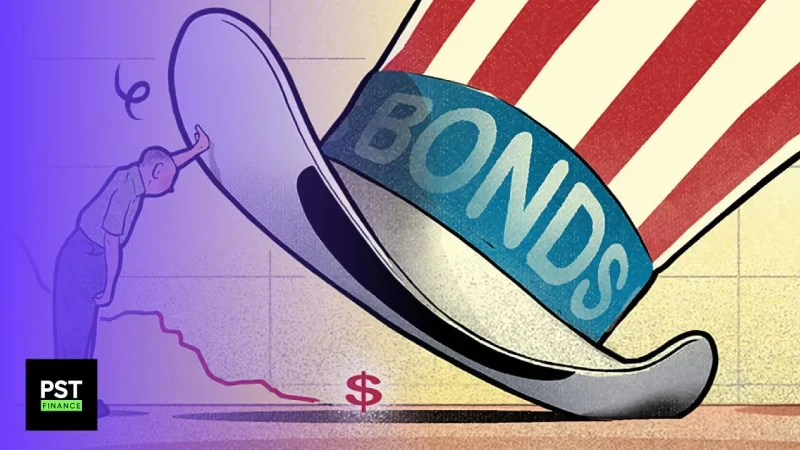If you’re an investor that wants to hedge against the uncertainty of the stock market, or simply want a relatively safe bet that requires minimal effort on your part, then you’ll love I-Bonds. They are investments issued by the U.S. Treasury that earn interest over 30 years, and get their rates adjusted regularly to protect your money from inflation, which is often enough reason to get people to buy them.
But, what many people don’t know is that there are some secret loopholes you can use to get the most out of your I-Bonds, and these hacks can even potentially save you thousands of dollars. Here are some under-the-radar hacks for I-Bonds, and also the hidden benefits of I-Bonds that can work wonders for your overall tax savings.
Reducing the 3-month Penalty
One of the most frustrating things about I-Bonds is that if you sell your I-Bonds within five years of purchasing them, you basically forfeit three months of interest earned. To be fair, you can’t completely get rid of the penalty, but you can greatly minimize it. It all comes down to timing.
Interest on I-Bonds is accrued and paid out at the beginning of each month, so it doesn’t matter if you buy your I-Bonds on the second day of the month or on the 27th day, you’ll still be getting paid the same amount. The same is true when you sell the I-Bond, it doesn’t matter if you sell it on the second day or on the 27th day, you’ll still receive the same amount of money.
For this reason, it’s best to buy your I-Bonds at the end of the month, and sell them at the start of the month. But, keep in mind that it takes a day or two for your I-Bond purchase to settle, so play it safe by buying and selling them with about a five-day buffer on each side. By taking this very simple approach, you’re effectively making the withdrawal penalty closer to a 1-month loss of interest rather than a full 3-months loss. Of course, this is not going to make you rich, but every bit helps in hard times, especially when you can secure that without a lot of effort.
The next thing you need to do to make sure you’re getting the absolute most out of your I-Bonds is to only buy I-Bonds in April and October, and the reason for this is because these two months are towards the end of a variable interest rate period for I-Bonds, where the rate is about to adjust, but hasn’t yet. Additionally, in these two months, there would be enough inflation data over the previous six months, so you’d know what the next interest rate is going to be. Therefore, when you buy in April or in October, you know exactly what interest rate you’re going to earn on your I-Bonds for the full first year that your money is 100% locked up. That way, you allow yourself to have a lot more information to make informed decisions.
Go Above the $10,000 Limit
It’s common knowledge that each person is only allowed to buy $10,000 worth of I-Bonds in any given year, and if you want to go beyond that, you can buy another $5,000 worth of I-Bonds using your tax refund. But, even if you don’t get a $5,000 tax refund, you can still get I-Bonds worth more than $10,000, as there are a couple of ways you can get around this, but just to give you a fair warning, don’t make any of these moves before consulting with a tax professional or an attorney first, to see if they can apply to you.
Adjusting Tax Withholding
You can go above this limit if you don’t normally get a tax refund is by adjusting your tax withholding from your paycheck. You can increase that amount so more money is withheld from your paycheck during the year, which will result in you getting a refund at the end of the year that you can use to purchase up to $5,000 worth of I-Bonds above that $10,000 limit.
Estimated Tax Payments
The second way is to file for estimated tax payments. You can file form 1040-ES for $5,000 in December, then, when you go and file your taxes in the spring for that year, you can get a refund in the form of that money back, which you can use to buy that extra $5,000 worth of I-Bonds.
Get Help from Your Spouse
You can also get around the $10,000 limit by having your spouse buy that I-Bond for you, since that limit is just per person. You can even buy I-Bonds for your children, so you can get $10,000 worth of I-Bonds for each child you have. But, keep in mind that when you buy I-Bonds for your children, you’d be buying them in their names, so that money becomes theirs.
You and your spouse can even maximize higher I-Bond rates that are available today, but you expect them to go down substantially in the next year or two. For example, if the I-Bond rates now are around 5%, and you and your spouse expect them to go down to 3% soon, then the two of you can buy each other a $10,000 gift of I-Bonds, and while this does count to the other person’s $10,000 annual limit, it only counts in the year when they actually receive the gift. You can buy the gift and let it sit in your account for years, building interest at the 5% rate even after rates go down, until the date when you physically gift it to your spouse’s account. Additionally, you can make multiple $10,000 gifts for the same person.
Through a Sole Proprietorship or an LLC
As for the fourth way you could get around that limit, which not many people know about, if you have a small or side business registered as a sole proprietorship or an LLC, you can also buy I-Bonds through it.
Through a Revocable Living Trust
The fifth way is buying the I-Bond through a Revocable Living Trust, which is a legal document that gives you the authority to make decisions about someone else’s money or property that’s held in the trust.
Buy I-Bonds Without Treasurydirect
Now, if you’ve ever bought an I-Bond in the past, you’d know that the Treasurydirect.gov website, which is the government website you have to go on to buy I-Bonds, could be a little hard to use. But, there’s a way for you to buy an I-Bond without using that website. You can use online banking platform Yotta Bank, which works by adding your money into what’s called an I-Bonds bucket, allowing you to directly buy I-Bonds through Yotta Bank without having to deal with Treasurydirect, and for no fees.
Save on Your Taxes
This I-Bonds hidden benefit has to do with how you can use them to save on your taxes. Much like when you invest for retirement in a 401(k) or a Roth, where you put that money in these retirement accounts and invest it to defer paying taxes on it until many years later when you’re already in retirement, I-Bonds have a similar thing going on.
I-Bonds are Tax-deferred
You don’t have to pay taxes on any interest your I-Bonds earn until you actually cash out, and since I-Bonds are technically 30-year bonds, you can shelter up to $15,000 per year from taxes for up to 30 years. What’s even better is that I-Bonds are exempt from state and local taxes, so if you live in a high tax rate state, you can invest in I-Bonds and earn some tax-free interest on your money, regardless of when you decide to cash in.
Use I-Bonds to Pay for College
If you’re a college student or entering college soon, then this next tip will be very good for you, and that is using I-Bonds to pay for your college expenses. When you use I-Bonds to pay for college, they become totally tax-free, allowing you to avoid both state taxes and any federal taxes on the interest earned on your I-Bonds.
If you already have a traditional 529 savings plan for college, then you should definitely keep it as your primary source of saving for college education because it gives a lot of benefits, but the big drawback in 529s is that if you don’t end up using the money on it for education-related expenses and still need to take out that money, you’d be stuck paying a 10% penalty. Say, you got into a less expensive college, or ended up not even going to college at all and got a job right away, but still have a lot of money in a 529 plan.
These situations happen often, so you can use an I-Bond to effectively hedge against these situations, and get the added benefit when you use them to pay for college. And if you end up not using that money to pay for college, you’ll face no penalty, as it’s just normal I-Bond usage.
Use I-Bonds in Tax Loss Harvesting
If you’re not in college but still want to use I-Bonds to get tax benefits, then you can use our final trick, which is using I-Bonds for tax loss harvesting. If you don’t know what tax loss harvesting is, you should know that it’s when you sell an investment, for example, a stock, at a loss, so you can offset the capital gains tax you’re going to incur on other investments on which you made a profit.
Since the IRS allows you to deduct losses up to $3,000 from your taxable income, you’ll end up lowering your overall tax bill from your investments. If you have some bonds in your portfolio, for example, if you hold shares of Vanguard’s Total Bond Market Index Fund ETF (NASDAQ: BND) and you see that it’s down by 1.20% year-to-date right now, you can sell shares of BND at the 1.20% loss right now, and use that money to buy an I-Bond.
That way, you’ll get to claim that investment loss and lower your overall tax bill, and also not lose the stability of having a bond in your portfolio during times when the stock market isn’t settling down. And because I-Bonds are savings bonds, not treasury or corporate bonds like Vanguard’s BND, you avoid the wash sale rule, which is when you sell out of one investment and then immediately invest in another super similar investment within 30 days, and if you do that, you won’t get to claim the loss for tax benefits.
The Bottom Line
It’s important to note that there are a lot more ways you can use your I-Bonds, and we tried to give you some hidden benefits that anyone can use to their advantage. You should still consult with a professional, whether its a tax professional or a lawyer, to see if these benefits can be applied to you, and hopefully you can use some of our tips when you buy your next I-Bond.
Disclaimer
Please visit and read our disclaimer here.









